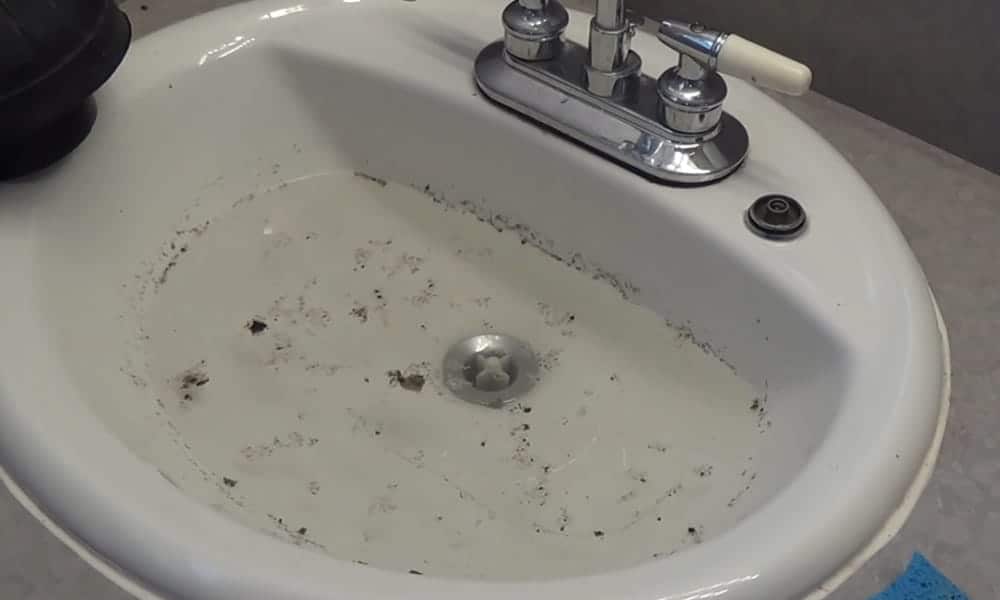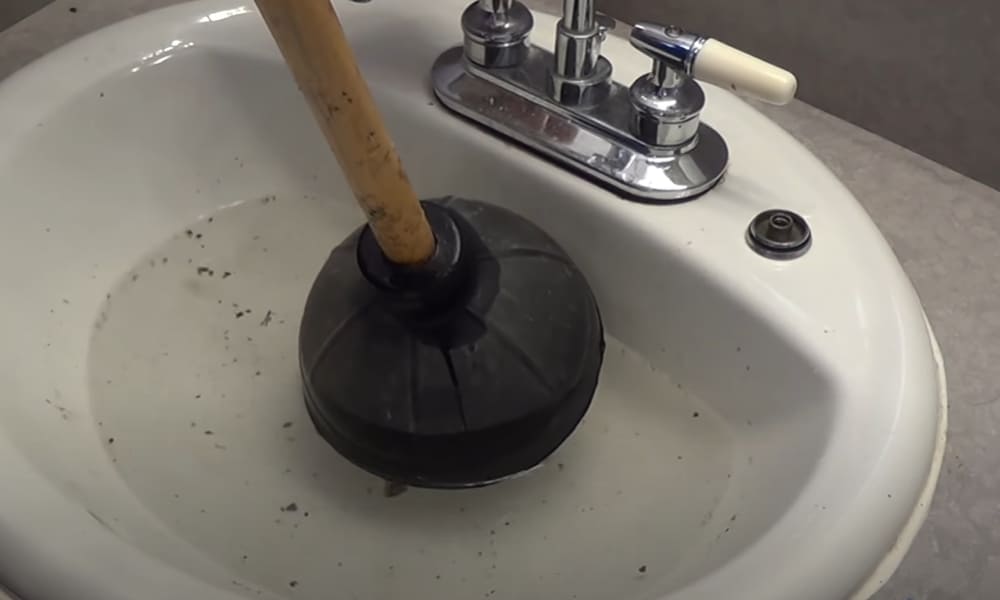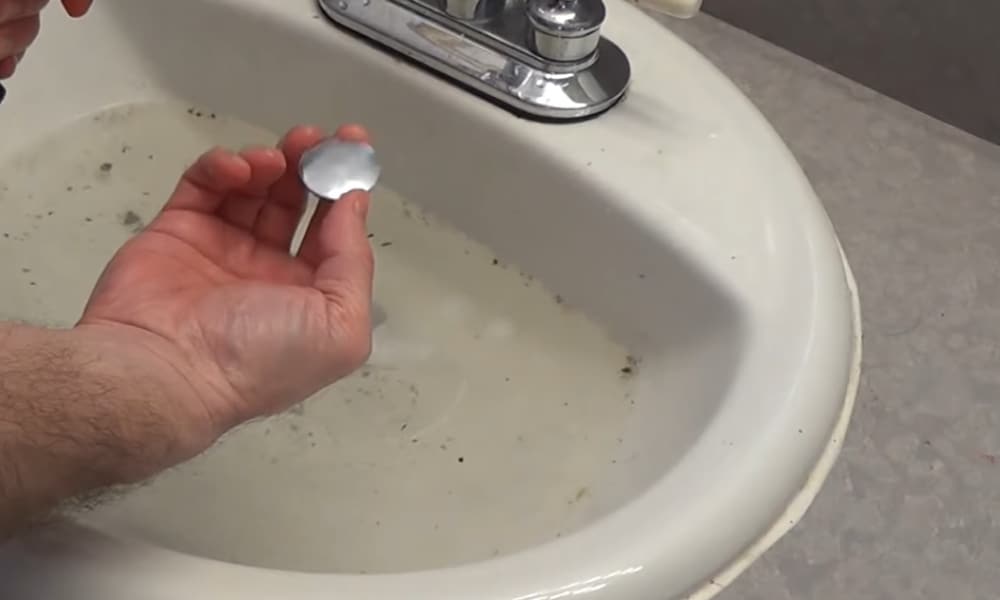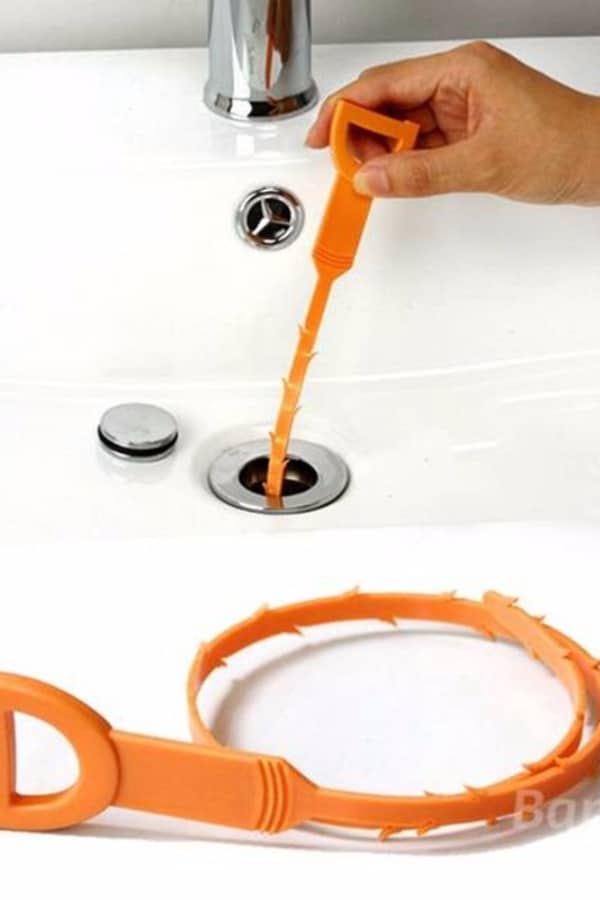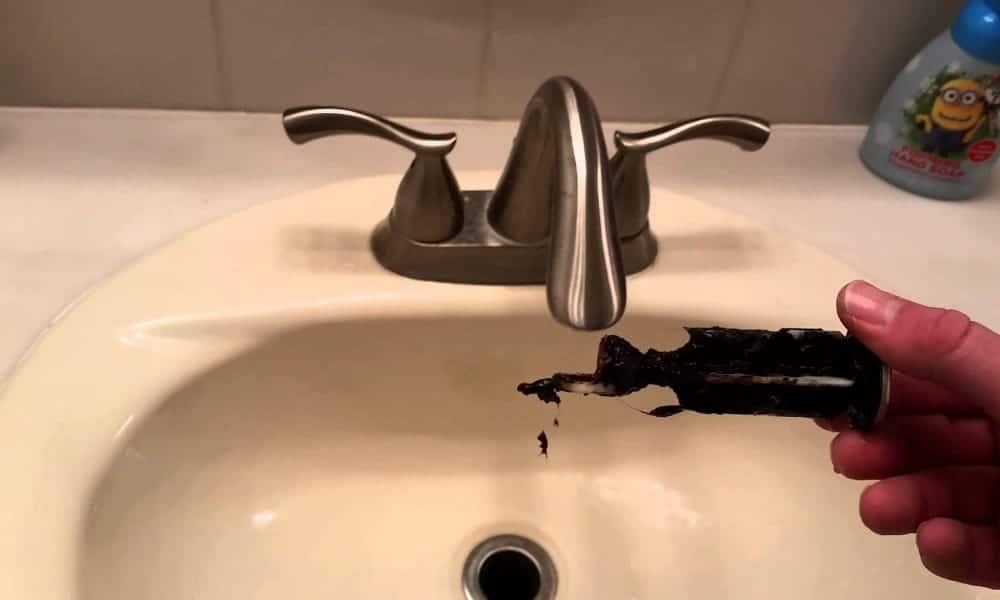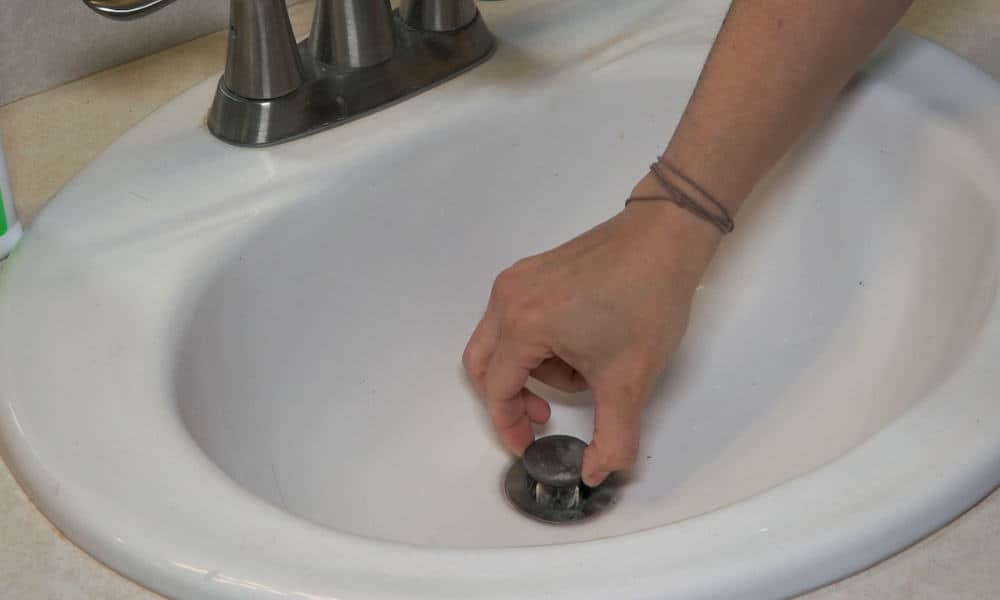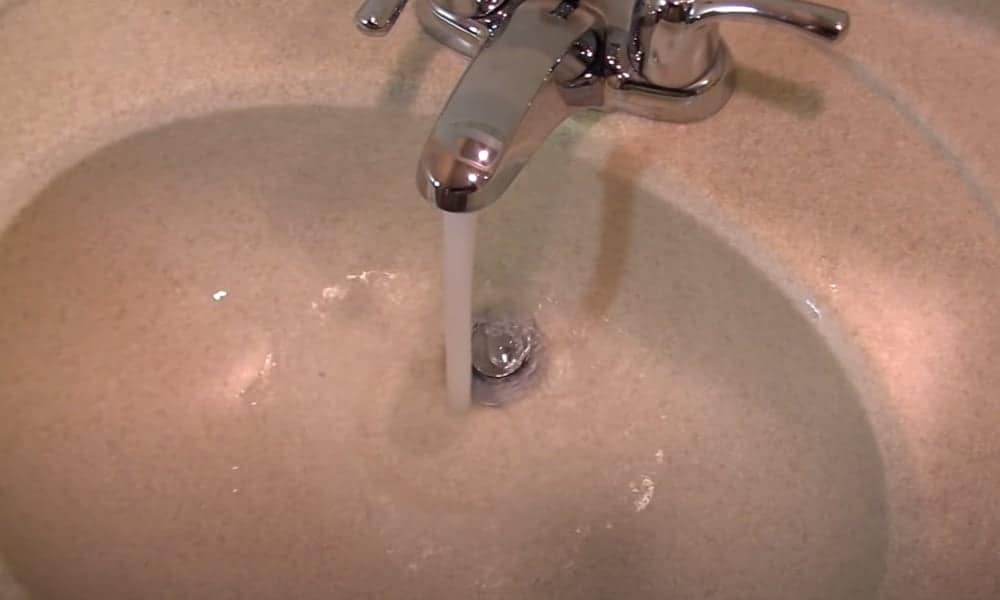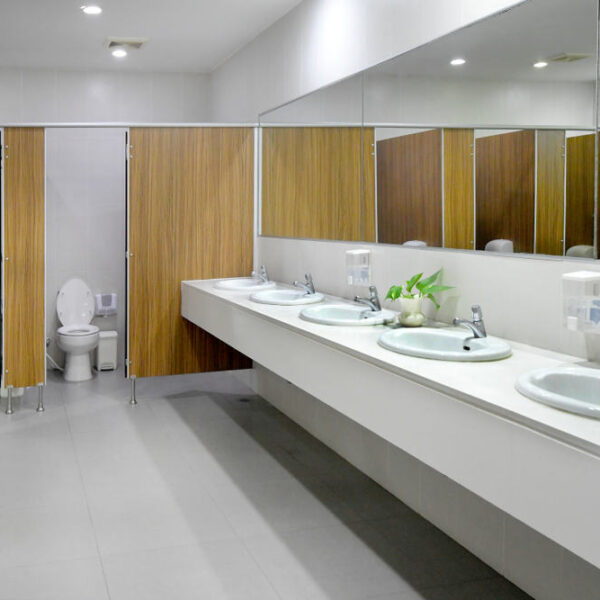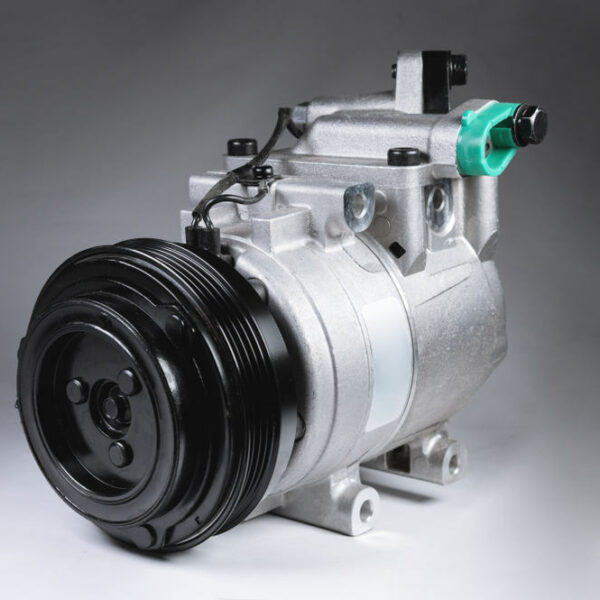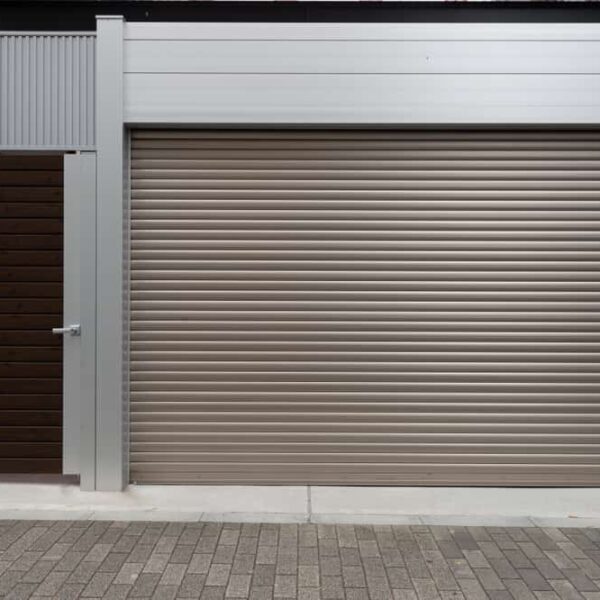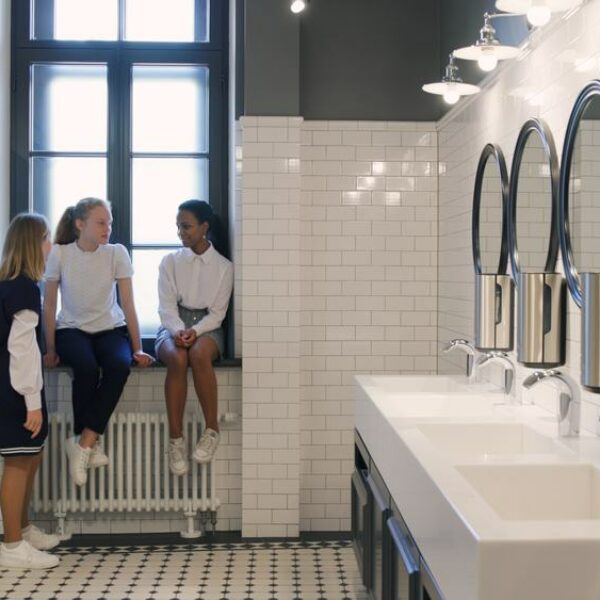Blocked drains are a pain. First, the water starts to take longer to drain away – but eventually, you’ll find that it doesn’t drain away at all, and every time you open the faucet, you end up with a sink full of standing water.
When this happens, you can call out a plumber – but this is expensive, and for such a simple problem, there’s a lot you can do yourself before taking this step. If you want to know how, here’s a guide to how to unclog a bathroom sink by yourself.
If you want to try another more unusual method for unblocking a bathroom sink, you can also check out this video to learn how to do it using Coca-Cola, vinegar and baking soda!
Required tools for unclogging bathroom sink
-
Plunger
A plunger is a useful item that every household should own. If you don’t have one, you can pick one up for very little at any hardware store.
-
Drain cleaning liquid
Drain cleaning liquid is a special chemical that you pour into a blocked drain to try to dislodge the blockage. Always read the instructions carefully since each product is different.
-
Flashlight
A regular handheld flashlight will help you see when you are working beneath the sink.
-
Pliers or a wrench
These may come in handy when you try to unscrew the pivot nut.
-
Brush (e.g. old toothbrush)
An old brush is useful for cleaning the stopper if you need to remove it from the sink.
-
Bucket
Any regular bucket will do. This is to catch water when you unscrew the pivot nut to remove the stopper.
-
Detergent
Regular cleaning detergent. This is for cleaning the stopper if you need to remove it.
-
Vinegar
Also for cleaning the stopper. If you don’t have any at home, you can pick up a bottle of white vinegar for cleaning at any hardware store.
-
Hair removal tool
A hair removal tool is an inexpensive item that consists of a strip of plastic with hooks on it that is used for unblocking drains. You push it into the drain and then pull it up again, and the hooks will pull out all the hair and gunk that is stuck inside.
You can pick one of these up at any hardware store. They are also easy to find online and are a useful tool to own, just like a plunger.
Step-by-step guide for clogged bathroom sink
Once you have all your tools assembled, you’re ready to start. Here is how to do it.
Step 1. Try the plunger
If the blockage isn’t too severe, you can try to dislodge it with a plunger. Fill the sink with warm water from the faucet or from a kettle (be careful it isn’t too hot or you might scald yourself).
Take the plunger, place it over the drain hole and give it a few hard pumps. This should start to suck some of the muck and gunk out of the drain. Remove the gunk from the water and repeat.
If you manage to pull up enough of the blockage, the water will start running down the drain freely – which means you have already unblocked the sink and there’s no need to move on to step #2.
Pro tip: If the plunger doesn’t work first time, you can try pouring boiling water down the sink. Leave it to drain away and then repeat Step #1. If it doesn’t drain at all, make sure you wait until it cools before you try it with the plunger again.
Step 2. Use drain cleaning fluid
If the plunger doesn’t work, you’ll need to try something a bit more heavy-duty. Take the bottle of drain cleaner and read the instructions.
The method will vary slightly, but the idea is to pour it into the sink, leave it long enough for it to do its job and then wash it away. However, make sure you read the instructions on the bottle carefully since each product is different.
Pro tip: If you don’t want to pour chemical products into your sink, check out the video we included at the top of this post. It shows you how to achieve similar results with Coca-Cola, vinegar and baking soda!
Step 3. Remove the stopper
If cleaning out the drain with a special drain-cleaning product doesn’t do the trick, you’re now going to need to remove the stopper from your sink and try to pull out the gunk manually.
If you’re lucky, you can just pull the stopper up with your fingers, turn it and pull it out. If not, you will have to go underneath the sink to remove it.
First, unclip the rod from the strap (the strap is a strip of metal with holes in). Make sure you put the clip somewhere safe so you don’t lose it.
Next, unscrew the pivot nut. This is the nut at the other end of the rod – you may need to use the pliers or the wrench if you can’t do it with your fingers.
When doing this, using the flashlight may help you see what you are doing more clearly.
Once the pivot nut is removed, you should then be able to pull the stopper out of the sink.
Pro tip: If the sink was particularly blocked, it is likely that some water will come out when you unscrew the nut. This means it’s a good idea to put the bucket underneath before you take it off. Also, the water is likely to be pretty nasty, so try to avoid splashing it on your face!
Step 4. Use the hair removal tool to unblock the sink
When you have removed the stopper, take the hair removal tool and push it into the drain. When you pull it back out, the hooks on the tool will pull out all the hair and other gunk that is blocking the sink. Remove it all from the tool and repeat several times.
Pro tip: The hair and gunk you pull out are going to be pretty disgusting. If you don’t want to touch it with your hands, it’s a good idea to wear rubber gloves for this step.
Step 5. Clean the stopper before replacing it
While the stopper is out, you should also give it a good clean. Pull off the worst of the gunk with your fingers then give it a scrub with an old toothbrush or something similar.
Pro tip: You may even decide to give it a more thorough clean by soaking it in a solution of warm water, detergent and vinegar.
Step 6. Put everything back in place
When you have unblocked the drain and finished cleaning the stopper, it’s time to put everything back. Screw the pivot nut back into place and reattach it to the strap with the clip.
Check that everything is in place and that the stopper is working correctly with the lever. Leave the bucket in place for the moment because you still need to do a test.
Step 7. Test the drain to check that it is unblocked
When everything is back in place, simply run some water from the faucet to see if it now flows away smoothly. If it no longer blocks up, it means you have successfully rectified the problem. You can now clear everything away and clean any dirt from inside the sink.
Extra pro tips
Here are a couple of extra tips that will help you when it comes to blocked bathroom sinks.
-
Take action early
Although it may be tempting to leave it and wait to see if the blockage clears itself, this will rarely happen. If your drain becomes blocked, it will only get worse with time, so it’s better to take action sooner rather than later.
If you take steps to remedy the blockage early, it will be an easier job, but putting it off will make it more of a challenge when you finally get round to doing it.
-
Take preventative action
The main reason for drains becoming blocked is tangled hair. Once hair starts to collect, everything else like soap and dirt also starts to congeal, blocking the drain.
This means you should take preventative steps to stop hair from going down your drain in the first place.
For example, if someone in your house has long hair, you might consider installing a grille over the drain to stop hair and anything else going in.
This is a simple and inexpensive solution that will mean you won’t need to worry about your drains becoming blocked later.
No need for a plumber
As you can see, there are several techniques you can try yourself that are simple to do and that will cost you little or nothing. Try the steps in this guide in order, and with any luck, you will find you can unblock your sink by yourself without the need for professional help.
However, if you try all of these steps and nothing seems to be working, it may be that your problem is more serious – at which point, it might be the time to call in the pros after all.
